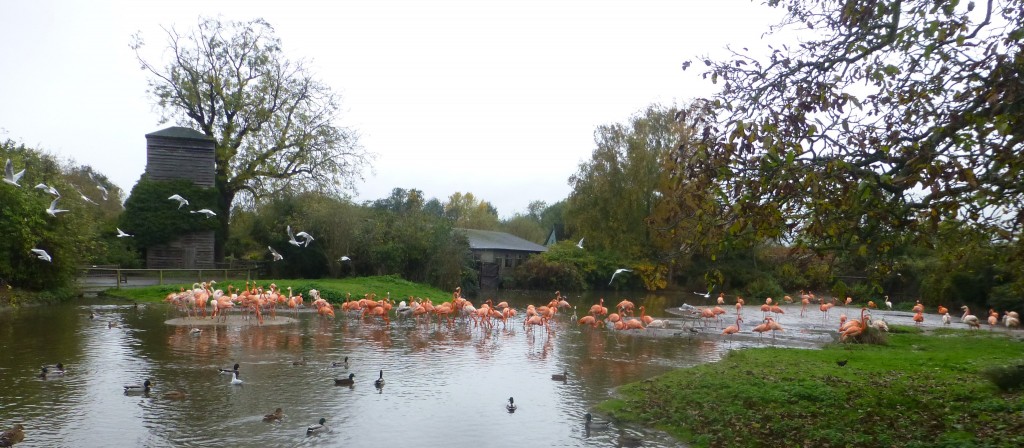Home improvements = happy flamingos #1
Hello all, the first of two posts about the work that the avics do at WWT to keep the flamingos fit, happy and healthy. In the pink you might say! This first instalment starts at the end of summer. I am sharing it now because of other changes that have been happening to the flamingo pen at WWT Slimbridge, and so I thought it would make a nice run of posts on a theme.
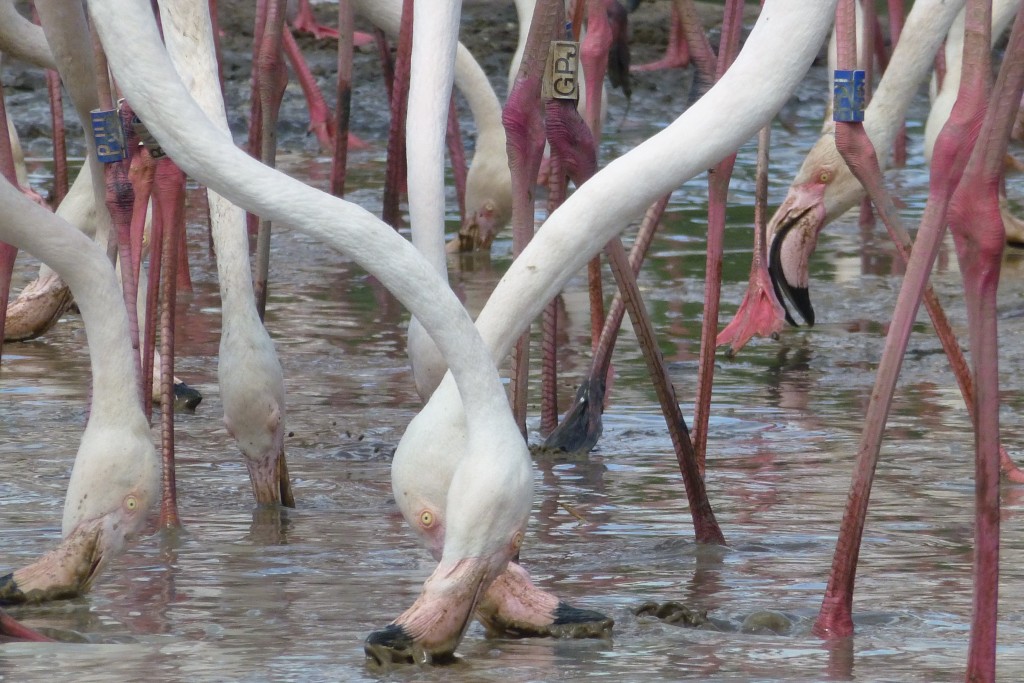
Flamingos are designed to filter feed, we all know this, and they can spend many hours sieving through the water to collect their food. Tweaks that change what the birds can do in their enclosures at WWT Slimbridge gives them more chances to filter feed. The flock of birds will spread out across their pool and this will give any would-be flamingo watchers more of a chance to see how their specialised feeding apparatus works. Flooding new parts of the flamingo's pen, or changing water levels, or giving their lunch in a different fashion (more on this in the photos below) are all tricks the avics use to ensure that the flamingos keep looking and behaving at their best.
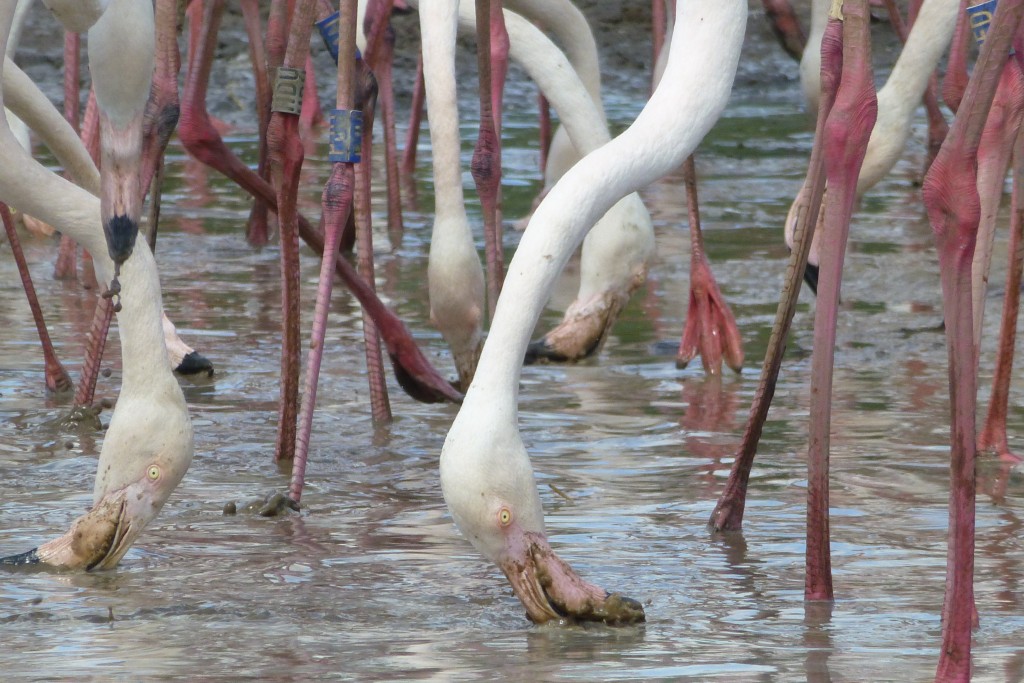
As you can see in the video below, there are many happy flamingos stomping away until their hearts are content. A really contented group of birds.
https://www.youtube.com/watch?v=088FWTlncyE
Let's look a bit closer, a mass of head, legs and feet, and you can see the birds pumping away to find tasty morsels in the mud and silt. It's a sea of flamingo faces :-)
https://www.youtube.com/watch?v=yVParP3bQEQ
At the end of summer, the greater flamingo nesting island was tidied up after the birds had finished breeding, and this would have meant lots of churned up mud and flooded sand for them to explore. As the abandoned nest mounds were flattened and the island's substrate turned over, insects, spilt food, broken egg shell and all kinds of "interesting" (to the flamingos!) objects would have appeared. And what the two videos show are the birds searching for these yummy treats. So by temporarily flooding some sections of their pen, the birds the chance to explore their home in new and exciting ways.
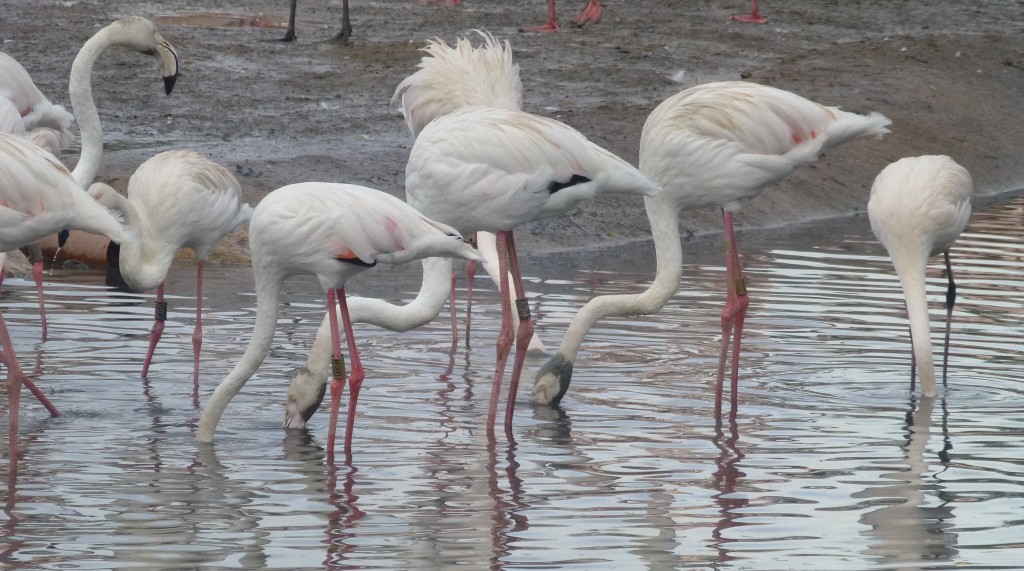
So moving out of summer and into Autumn. Regular visitors might be able to pick up changes in the behaviour of the flamingos, as well as changes to where you are likely to find them in their pen.
Flamingos like space. Yes, they like to be crowded in the breeding season but outside of nesting they enjoy a little more room to manoeuvre. This is especially noticeable in the greater flamingo flock, which use the end of their pool near to the Australian Pen much more these days than they do in the summer. Also, check out the Chilean flamingos in South America, who do a regular seasonal commute between their back nesting area and the grass to the side of their house. The lesser flamingos too use the pen's grassy banks, islands and pools differently with season. This more fragile of species has less of an outside "wintering area" as the cold may cause them to seek the shelter inside of their house, where it is snug and warm.
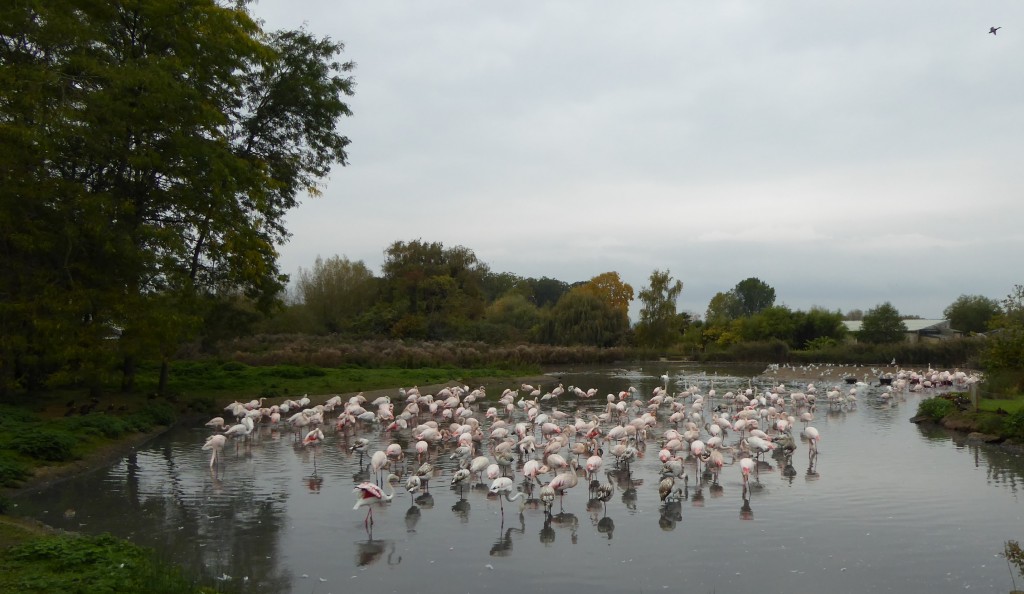
Chicks from 2015 continue to develop and the first shades of pink show through. I've mentioned before how grey/brown youngsters get shunted to the edge of the flock. Patiently waiting until they are as vibrant in colour as the mature adults. You can see this segregation in the photo above. Again, the large enclosures at WWT Slimbridge allow the birds to mix naturally, providing visitors with an opportunity to see an exact replica of what the flamingos would be doing out in the wild.
So to leave you with a taster for next time, there are have also been alterations to the style of the Caribbean flamingo's enclosure. All in the name of good animal welfare. Stay tuned to find out more.
